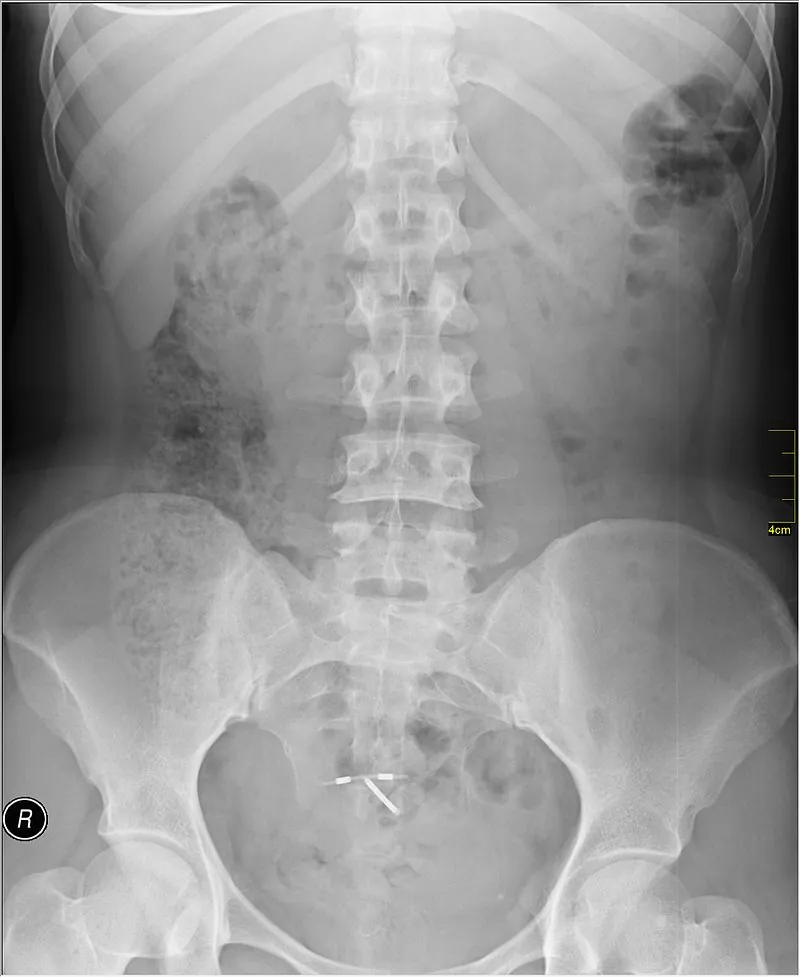Pelvic trauma can involve anything from an automobile accidental injury, an ATV injury, a motorcycle injury or even a fall from a great height. The pelvic structure is an ovoid collection of bones that connect the vertebral spine to the legs. The pelvis also protects the urinary bladder and, in women, the uterus and reproductive organs.
What is Pelvic Trauma?
Pelvic trauma can mean a fractured pelvis. It can also mean damage to the structures normally protected by the pelvic architecture. These types of injuries are usually blunt trauma injuries with high forces, such as those that occur in motor vehicle accidents, ATV accidents and motorcycle accidents, among others. Penetrating injuries are due to knife wounds and gunshot wounds to the pelvic area.
Pelvic fractures make up about 3 percent of all skeletal injuries and carries a mortality rate of between 5 to 16 percent. The mortality rate of acetabular fractures is only about 3 percent, while open pelvic fractures, a rarity, have a mortality rate of about 45 percent. Most of the fatalities are due to secondary internal injuries. Deaths just from pelvic trauma range from 0.4-0.8 percent of all trauma fatalities.
Fractures of the pelvic ring account for 23 fractures per 100,000 patients per year while fractures of the acetabulum account for only 3 fractures per 100,000 people per year. Risk fracture for pelvic fractures include having osteoporosis, a low bone mass, smoking history, hysterectomy and a high risk for falling. People older than 60 years have a higher than average incidence of pelvic fracture.
Pelvic fractures have a high rate of bleeding excessively, which can lead to exsanguination. It is difficult to stop this sort of bleeding without the use of surgery to stop bleeding blood vessels and to realign the bones so they don’t continue to bleed.
Internal injuries to the pelvis include an injury to the bladder and possibly the urethra. This can lead to leakage of urine into the abdomen instead of to the outside. This needs to be treated with surgical repair of the bladder or urethra so that the urine drains clearly.
Internal injuries to the pelvis can mean injury to the iliac arteries, veins and nerves. These are the large structures that supply blood and innervation to the legs. If they are disrupted, there is severe bleeding and possible lack of circulation or innervation to the legs. The affected leg is cold or congested or lacking in ability to move or have sensation.
Another internal injury to worry about is an injury to the female reproductive system. The uterus can be lacerated by fragments of the pelvis and can be injured by penetrating trauma. The ovaries can also be involved as well as the fallopian tube. These can be repaired surgically in some settings.
The rectum can be injured in a pelvic injury. This is why a rectal exam needs to be assessed for blood and for the presence of a high riding prostate.
Causes of Pelvic Trauma
Pelvic trauma occurs as a result of both penetrating and blunt force trauma. The major causes of pelvic trauma include:
• Motor vehicle trauma
• Motorcycle trauma
• ATV trauma
• Pedestrian accident
• Bicycle trauma
• Horseback riding injuries
• Fall from a great height
• Combat blast
• Knife injury
• Gunshot wound
Signs and symptoms of Pelvic Trauma
An evaluation of a person with pelvic trauma depends on first looking at the signs and symptoms of the disorder. Many traumatic injuries of the pelvis include:
• Pelvic pain
• Inability to walk
• Hypotension from bleeding internally
• Inability to void
• Voiding blood
• Deformed pelvis
• Rectal bleeding
• Vaginal bleeding
• Cold lower extremity
• Congested lower extremity
• Numbness or weakness in the leg
Diagnosis of Pelvic Trauma
An evaluation of a person with suspected pelvic trauma starts with looking for evidence of pelvic injury such as bruising of the pelvis, obvious instability of the pelvis and blood from the urine, vagina or rectum.
An ultrasound can be done of the pelvis, looking for free fluid, such as blood or urine. Plain films of the pelvis may pick up pelvic fractures, especially if they are displaced. The gold standard for pelvic injuries is the CT scan, which can look for blood in the pelvic space, disruption of the bladder and disruption of the pelvis itself.
If genitourinary tract injuries are suspected, a retrograde cystourethrogram can be done to check out the patency of the urethra, bladder and possibly the ureters and renal pelvis.
If the patient is hemodynamically unstable, a diagnostic peritoneal lavage can be done to check for injury anywhere from the pelvis to the diaphragm.
The extremities can be evaluated to make sure they are getting enough blood and neurological input.
Treatment of Pelvic Injury
Pelvic injuries are complicated to treat. The pelvic fracture aspect of the injury must be treated, either conservatively or through surgery. Internal injuries such as bladder tears, uterine injury or urethral tears need to be fixed surgically, as do vascular tears, neurological injuries and rectal injuries. All of this can be treated at the same time with an exploratory surgery combined with an orthopedic repair of injured pelvic bones.
Complications of Pelvic Injury
Surgery to the pelvis is not without its complications. Some of the main complications associated with pelvic trauma include:
• Venous hemorrhage—38 percent
• Visceral injury—17 percent
• Bladder or urethral injury—6 percent
• Nerve deficits—15 percent
• Rupture of the thoracic aorta—1 percent
I’m Ed Smith, a Sacramento Motorcycle Accident Attorney with the primary accident information site on the web, www.AutoAccident.com.
If you or a loved one has suffered an injury in a motorcycle accident caused by the negligence of another, call me now at 916.921.6400 for free, friendly advice.
See our Reviews on Yelp, Avvo and Google.

